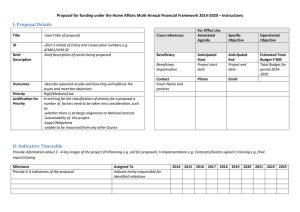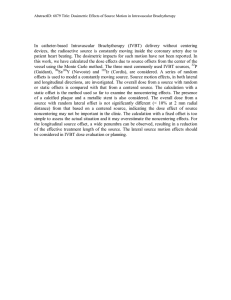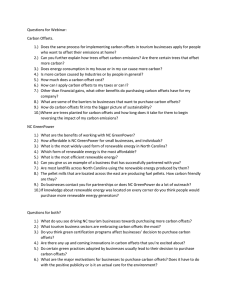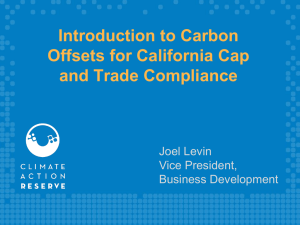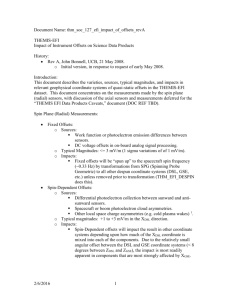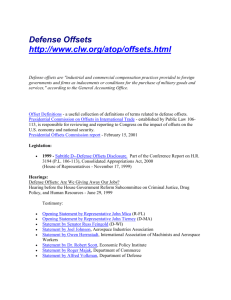Victor Flatt
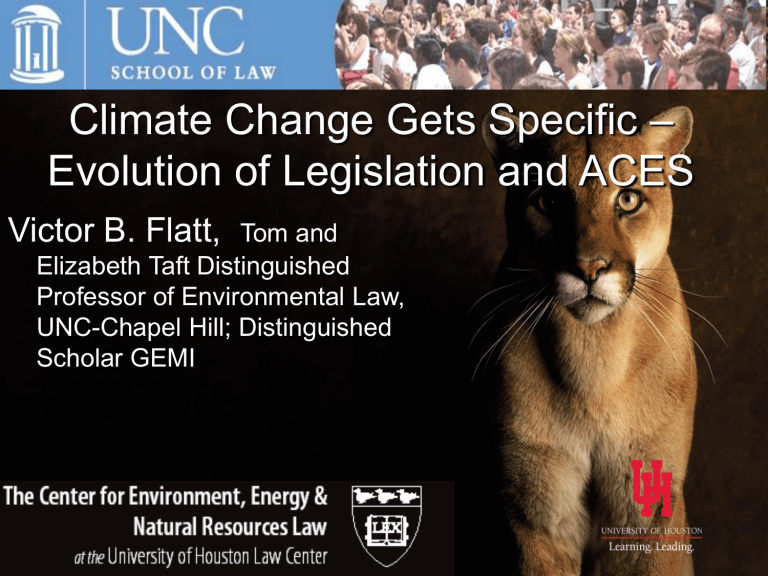
Climate Change Gets Specific –
Evolution of Legislation and ACES
Victor B. Flatt,
Tom and
Elizabeth Taft Distinguished
Professor of Environmental Law,
UNC-Chapel Hill; Distinguished
Scholar GEMI
Evolution of Cap and Trade Bills
McCain-Lieberman
Lieberman-Warner
Dingell-Boucher
Waxman-Markey (ACES), passed out of house in June.
Important Issues in Federal Cap &
Trade
Target, and target timeline
How will GHG allowances be allocated
How much of the economy covered
Adaptation funding
Offset definition and restrictions
“Safety” Valve
Who will Administer
Pre-emption and Benefits of Early Action
Senate Timeline and Politics
Originally scheduled vote before August recess – now September
Looking for Republican co-sponsors
– Snowe, Collins, Murkowski, McCain, Graham
– Alexander seems to be out
60 votes possible (3 democratic defections predicted with high certainty – Nelson, Landrieu,
Byrd)
Compromises necessary?
Alaska funding; possible natural gas role?
U.S. Federal Legislation
Waxman- Markey (now ACES) voted out of house
Important Details
– Coverage
– Target Reduction
– Allocation
– Administrative Oversight and Market
– Offsets
Target Goals
(G-8 agrees to 2 C rise limit)
83% reduction of 2005 levels by 2050
17% reduction of 2005 levels by 2020
– Initial draft had 20% by 2020
– New draft claims with additional controls outside cap, will still reach 20%
– IPCC recommends 25-40% below 1990 levels by
2020, but goal is only about 7% below 1990 levels by
2020.
– EU looking at 25%
Large Coverage
– Over 85% of emissions
ACES How Allocated
15 % auctioned per year
Initially, other percentage given away
Approx. 59% to industry; 25% for needs/interest of public- adaptation, enviro, etc…
2019
2020
2021
2022
2023
2024
2025
2026
YEAR
2012
2013
2014
2015
2016
2017
2018
2027
2028
2029
2030
Annual allowances (in millions)
(sec. 721)
5,162
5,056
4,903
4,751
4,599
4,446
4,294
4,142
ALLOWANCES
4,627
4,544
5,099 *INC COVERAGE
5,003
5,482*INC COVERAGE
5,375
5,269
3,990
3,837
3,685
3,533
YEAR ALLOWANCES
2031 3,408
2032 3,283
2033 3,158
2034 3,033
2035 2,908
2036 2,784
2037 2,659
2038 2,534
2039 2,409
2040 2,284
2041 2,159
2042 2,034
2043 1,910
2044 1,785
2045 1,660
2046 1,535
2047 1,410
2048 1,285
2049 1,160
2050 and each year thereafter 1,035
Allowance allocation to Regulated Entities
35% for electric utility sector;
– Last version gives percentage to rural electric cooperatives; fight over allocation
15% for carbon-intensive industries, such as steel and cement, in 2014 (reduced by 2% every year)
9% for local natural gas distribution companies, in
2016 (reduced to zero between 2026 and 2030)
3% for automakers toward advanced technologies through 2017 (reduced to 1% from 2018 and 2025)
2% for oil refineries from 2014 to 2026
2% for carbon capture and storage technology from
2014 to 2017 (increases to 5% after 2018)
Allowance allocation (cont.)
To states and other funds:
10% for states for renewable energy and efficiency investment from 2012 to 2015 (reduced to 5% between
2016 to 2022)
5% for tropical deforestation prevention projects
2% for domestic adaptation to climate change between
2012 and 2021 (increases to 4% between 2022 to 2026, to
8% in 2027)
2% for international adaptation and clean technology transfer from 2012 to 2021 (increases to 4% between 2022 to 2026, to 8% in 2027)
1.5% for programs helping home heating oil and propane users (reduced to zero between 2026 and 2030)
1% for Clean Energy Innovation Centers for R&D funding
0.5% for job training from 2012 to 2021 (increases to 1% after 2022)
Modified Formula in passed bill
Emission Allowance Rebate Program
For Carbon Intensive Industry declining through 2035
Read in Conjunction with prior authorized distributions
Offsets
Larger amount available than prior proposals – usually 2 billion tons of CO2 equivalent per year
Varies between 15% and 70% of total over life of bill
Split between domestic and foreign
Foreign subject to 25% penalty
When Passed – set up list of existing offsets
Offsets Cont.
Domestic offset sequestration reversals that are “unintentional” may not be made fully whole (statute calls for 50% replacement)
Possibility of offset failure could infect the secondary markets
Complexity and Controversy – Expect to see changes with offsets
Offsets to USDA
Major Change – USDA jurisdiction over all land based offsets and sequestration – most
Also “term” offsets
Positive – USDA has more staffing worked with farmers
Negatives – role of watchdog? Loopholes?
Negative – no environmental review; complication with pre-emption – California
EPA oversight role? Senate compromise
Market Details
FERC in charge of initial allocation/auction
Might be transferred to CFTC
CFTC in charge of regulating “secondary” markets, i.e. markets in all financial or other contractual, risk-hedging instruments containing carbon allocations or offsets (regulated like other commodities)
Initial offset contracting exempt from this
Looking at a restriction in all commodity trading from financial crisis.
All OTC WILL have to be “cleared.”
Safety Valve
